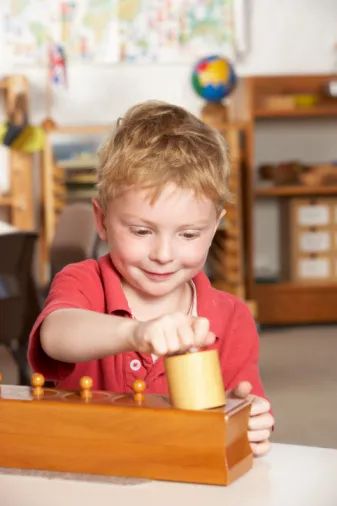
Through a lifetime of observation and study, Maria Montessori discovered that all children experience intense phases of growth, (physically, mentally, and emotionally,) especially in the first 6 years of life. She called these phases "sensitive periods."
A sensitive period is a critical window of opportunity during which children absorb certain concepts easily and naturally. In fact, Maria Montessori explains that children under the age of 6 have amazingly absorbent, sponge-like minds. If these important windows are missed, the information becomes significantly more difficult for the child to learn.
“We cannot know the consequences of suppressing a child's spontaneity when he is just beginning to be active. We may even suffocate life itself. That humanity which is revealed in all its intellectual splendor during the sweet and tender age of childhood should be respected with a kind of religious veneration. It is like the sun which appears at dawn or a flower just beginning to bloom. Education cannot be effective unless it helps a child to open up himself to life.”
~Maria Montessori
The following is a list of Maria Montessori's sensitive periods, as described by Mary Ellen Maunz, M.Ed., and master Montessori teacher.
As you can see by the chart above, all of these vital sensitive periods take place before what is considered "school age" in this country. Clearly, preschool education is essential, but an education that acknowledges and maximizes the full potential of these sensitive periods just makes the most sense.
"If an educational act is to be efficacious, it will be only that one which tends to help toward the complete unfolding of life. To be thus helpful it is necessary rigorously to avoid the arrest of spontaneous movements and the imposition of arbitrary tasks."
~Maria Montessori
Here is an example of what I mean. Traditionally, one of the first things we teach early learners is the alphabet song. This is a popular and catchy way to familiarize children with the names of letters. However, according to the Montessori Method, this is an ineffective way to utilize the sensitive period or learning letter shapes and their corresponding sounds, experienced by all children between the ages of 2½-4½ years. Children at this age are innately hungry to learn letter shapes and sounds. The Montessori Method has many tried and true materials that provide children with the opportunity to satisfy those yearnings. The alphabet song only teaches children the names of the letters.
Think about it...when you read the words on this page, you are recognizing letter (and word) symbols and sounds. Unless you are participating in a spelling bee, the names of the individual letters never actually come into play. Why, therefore, do we make it a priority to teach letter names? The answer is simply because we always have.
Fortunately, we parents do have a choice in how our children learn. Even if you live in an area where a Montessori school is not accessible, the Montessori Method is available to you at home. Companies such as Age of Montessori offer online training to help you provide a better education for your child. For more information, please read Articles on Montessori and Homeschooling.





















